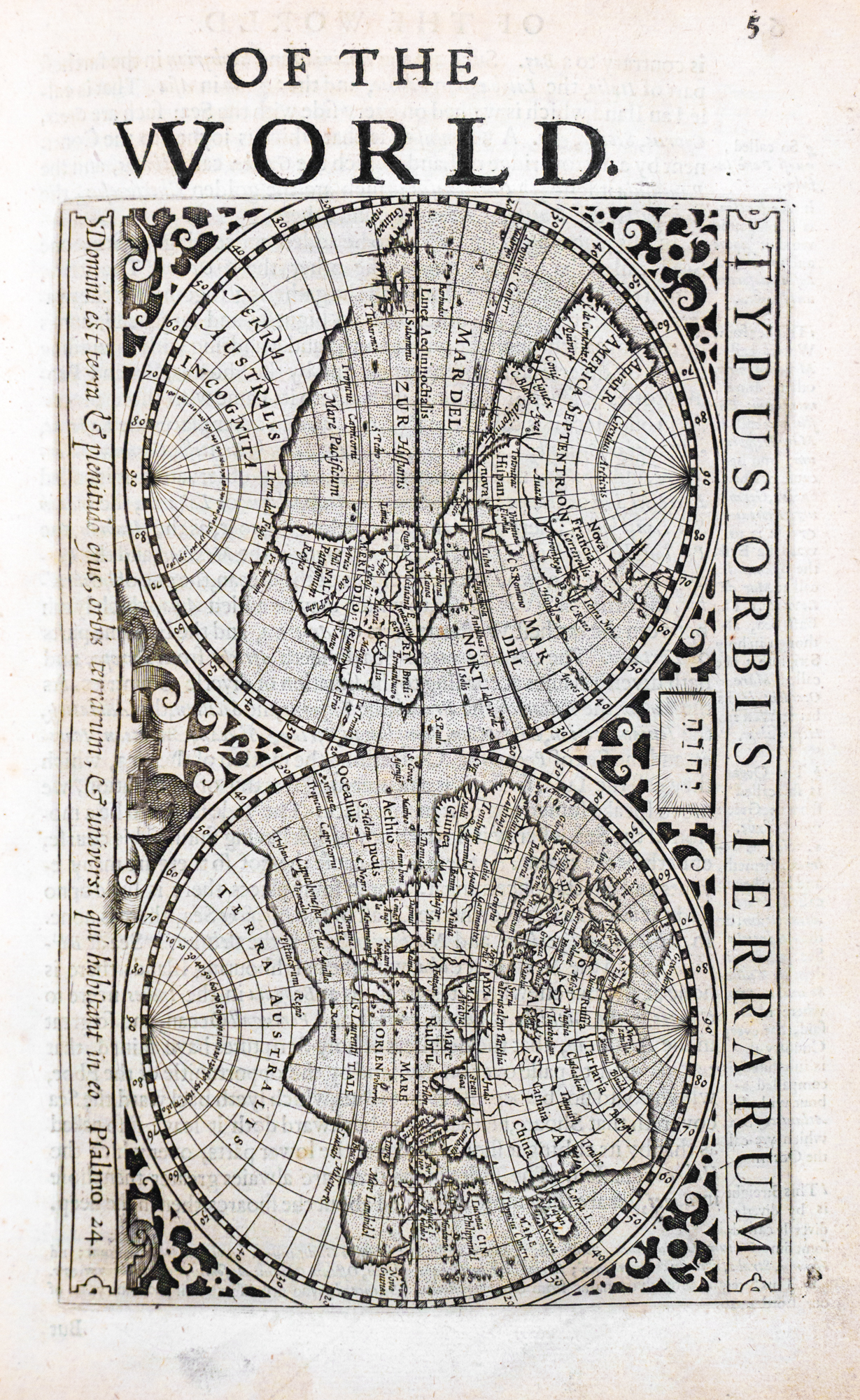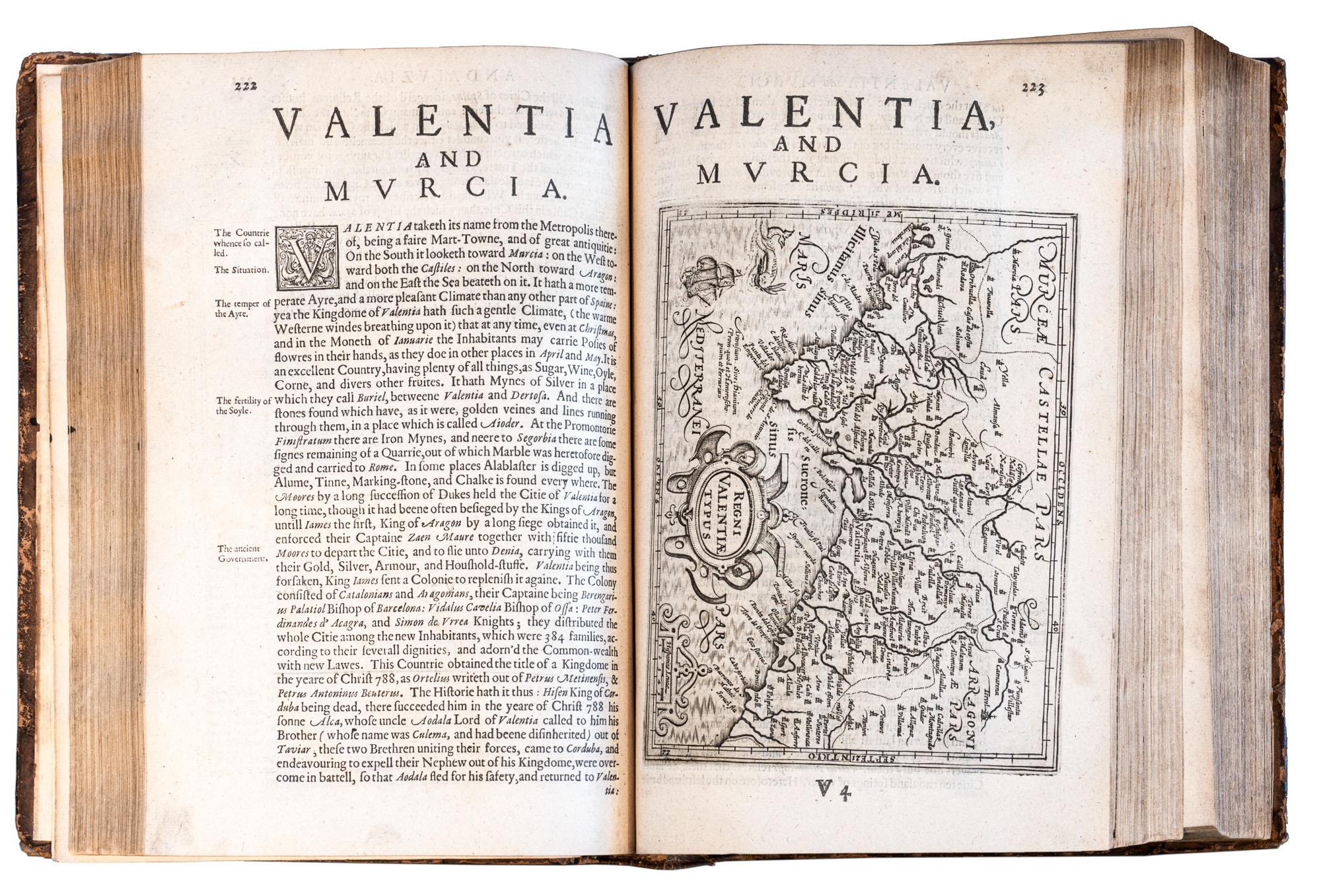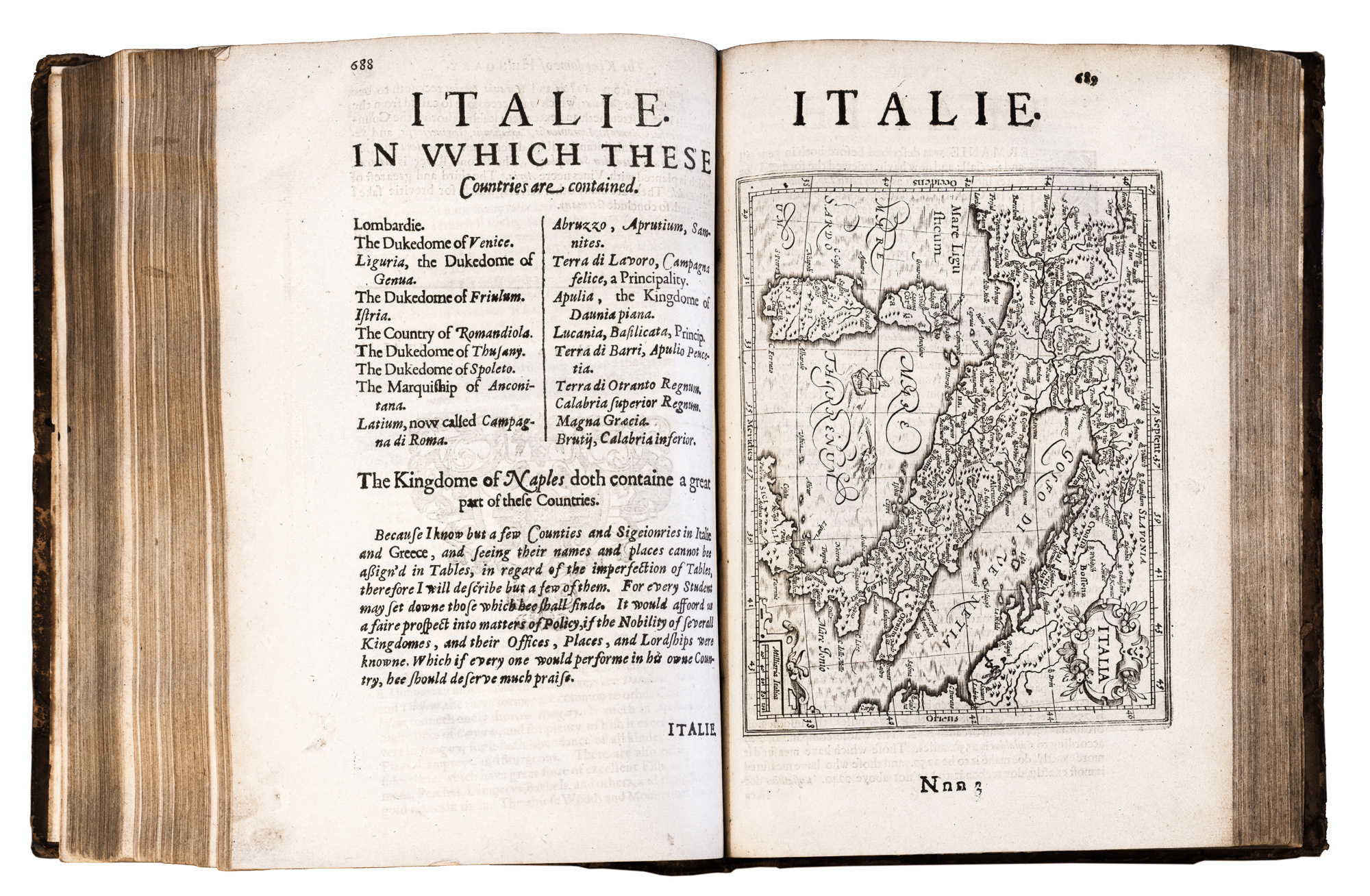
Gerardus Mercator (Latin form of Gerhard Kramer) was a Flemish geographer, engraver and mathematician renowned for his production of maps, globes and scientific instruments. Mercator is best known for his work in the field of cartography and his development of the cylindrical projection, now known as the Mercator projection, that allowed for straight lines of constant compass bearing to be represented as straight lines on the map, making it an invaluable tool for sailors and navigators. His most famous map: Nova et Aucta Orbis Terrae Descriptio ad Usum Navigantium Emendate Accommodata ('A new and more complete representation of the terrestrial globe properly adapted for use in navigation') was published in 1569. Mercator's early maps were in large formats suitable for wall mounting but in the second half of his life, he produced over 100 smaller regional maps suitable for binding into book format.
Mercator’s Atlas was first published posthumously by Mercator’s son Rumold in 1595. The first edition in 1595 and most subsequent editions of the Atlas included a decorative frontispiece engraving showing the mythological Atlas holding up the world. Mercator had envisioned an extensive work containing maps from modern and ancient geography and had published his Ptolemy maps in 1578, followed by maps of modern geography for parts of Europe in 1589. For the 1595 first edition of Mercator’s Atlas, Rumold included as much of his father’s posthumous cartography as possible, added his own world map and had cousins engrave maps of other continents. After Rumold’s death in 1599 the copperplates for the Atlas were sold and came into the hands of Jodocus Hondius (Latin form of Joost de Hondt), whose family continued to republish and update the Atlas, releasing over 50 editions in the main European languages.

